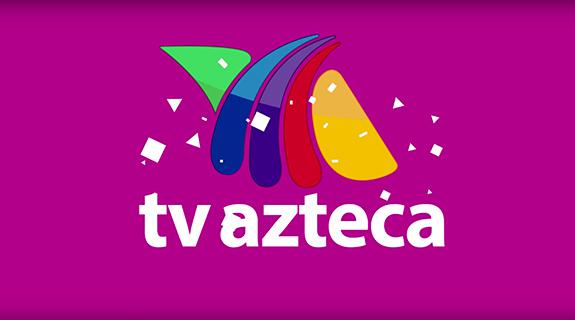With a broader perspective on television and viewers, Televisión Azteca has reinvented itself with the launch of its campaign La Nueva TV Azteca that includes new programming, a new look for Azteca 7, and the tagline 20·20 vision that refers to the company’s strategic plan for the next four years.
The Mexican media group, owned by Grupo Salinas, reaches 98 percent of the country’s households and operates two national television networks: Azteca 13 and Azteca 7. It also includes the channel Proyecto 40, which brings together some of Mexico’s most outstanding personalities.
As part of the rebrand, TV Azteca underwent an organizational overhaul as the group opened its doors to co-productions and independent producers. TV Azteca CEO Benjamín Salinas “carried out a never-before-seen opening of the company, together with an inside-out change of paradigm,” said a TV Azteca executive who declined to be cited on the record. This corporate renovation is being revealed via the umbrella campaign La Nueva TV Azteca, the core of which is a piece titled La Fuerza de TV Azteca. This underlying strategy is based on debunking the myth that free-to-air television is dying.
“We understand there are increasing entertainment options and we are comfortable with the competition,” says TV Azteca’s executive. “Audience fragmentation is precisely what increases the value of free-to-air television, because no other medium can reach so many people at once like we do.”
TV Azteca stresses there is a future for FTA television. It’s around this idea that the network designed a representative logo for the whole campaign.

The logo includes the tagline 20·20 vision, which refers to the time period TV Azteca has set to achieve its goals, the year 2020, while also alluding to perfect eyesight—or vision.
“We do not only want to see the world well, but we also want to broadcast it, so that we are the most-watched television network,” added the TV Azteca executive.
Out of several promotional pieces included in the campaign, the video La Fuerza de TV Azteca stands out.
“Using hard data, we help dispel the false myths that free-to-air television is failing, particularly at our stations,” says the executive.
The clip highlights the number of people who tune into the network and showcases its success over its competitors.
For example, according to the promotional video, the series premiere of Hasta que te conocí (Until I Met You, the story of Mexican singer Juan Gabriel) drew 594 thousand people on TNT, versus the 12.7 million viewers who watched it on TV Azteca.
RELATED: TNT Latin America Brings Mexican Singer Juan Gabriel’s Story to Life
Or Jessica Jones, which reached 4.8 million people on Netflix in three months, compared to the 12.6 million viewers that tuned into TV Azteca to see the Copa América match in which Chile beat Mexico 7-0.
The promo also takes on the myth that millennials no longer watch television. A voice-over emphasizes “free-to-air television has a wider reach, a larger audience and is stronger than other entertainment options.” A final tagline concludes that TV Azteca is stronger than ever.
To further promote this concept, the network broke down the central video into shorter pieces that refute these myths one at a time, making them more appropriate for publication on websites and social media platforms.
According to the TV Azteca executive, the network’s refresh “seeks to captivate the audience, so Benjamín Salinas decided one of the necessary steps was for each channel to become independent and have its own strategy.”
Azteca13, for instance, is evolving its content by “aiming at lively, fresh and modern programming, with topics today’s women want to see, understand and enjoy,” says the executive, remaining true to the channel’s target audience of Mexican women.
This includes new shows such as ¿Qué hay de comer?, a program hosted by Omar Fierro, Martha Guzmán and Johanna Vega-Biestro, that proves cooking can be a lot of fun; and Celia, La Serie, a new biography series that narrates the life of star Celia Cruz.The evolution of Azteca 7 is not only based on new content, but also on “changes in positioning, visual identity and communication strategy,” says the executive.
As part of this new identity, on October 17, TV Azteca debuted a new more dynamic logo and a new slogan, less blah blah, a play on words showing the channel has reinvented itself “with more live content and less chit chat.”

“The new commitment of Azteca 7 is to become an agent of transformation, a meeting point of society, with the goal of breaking the status quo and motivating action,” says the executive. “We want to create entertainment that inspires doing and triggers learning.”
For this purpose, the upcoming programming will include Más Allá del Chisme (Beyond Gossip), focused on show business; Enamorándonos (Falling in Love), in which contestants seek love through a phone call or a tweet; and Entre Correr y Vivir (Between Running and Living), an action and suspense series.
Overall, TV Azteca aims to become more dynamic through its rebrand, “featuring programming with live content that connects with the audience, and high-quality productions made in-house, in co-production or by independent producers that lead us to develop new business models,” says TV Azteca’s executive.
RELATED: TV Azteca Mexico Renueva Su Imagen En Base A Su Fuerza Como Canal Nacional De Aire
Tags:












































__twocolumncontent.jpg)











